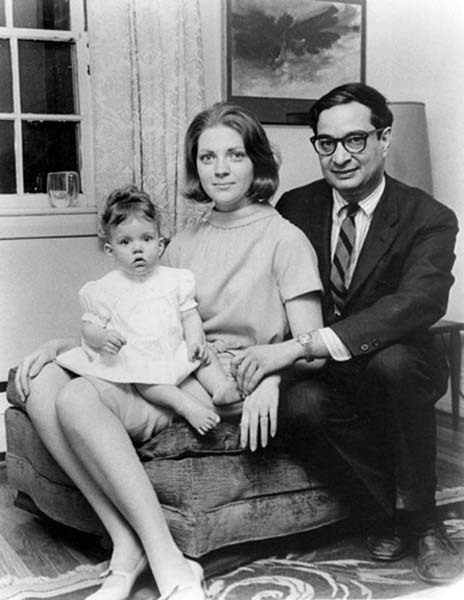Ali Javan
Ali Javan

Ali Javan and Family
Ali Javan is the co-inventor of the gas laser and recipient of the OSA's highest honor the Fredric Ives Medal/Jarus Quinn Prize. Javan’s career in physics and spectroscopy spanned more than 50 years. The helium-neon laser, which he co-invented with William R. Bennett in 1960, was the first continuous light laser. In addition to many scientific applications, future generations of gas lasers led to inventions on the areas of Internet data transmission, bar-code scanners, metal welding, medical technologies and monitoring, and laser printers.
Javan was born in 1926 in Tehran, Iran, and studied at Tehran University in 1947-48, before moving to the US in 1949 to study physics and math at Columbia University, New York. He completed his Ph.D. in Physics in 1954 at Columbia, followed by post-doctoral studies, and then a position at Bell Telephone Laboratories in New Jersey during which time he co-invented the gas laser. In 1962, he joined the faculty at MIT where he developed a groundbreaking research lab, one of the largest of its kind in the 1960s and 1970s. Noted accomplishments during his distinguished career at MIT were the development of the first method for accurately measuring the speed of light, launching the field of high-resolution laser spectroscopy, and advancing the theory of the three-level maser. Javan was the MIT Francis Wright Davis Professor of Physics Emeritus at the time of his death.
Among his many awards are the Albert Einstein World Medal of Science of the World Cultural Council Foundation and an Inductee of the National Inventors Hall of Fame Foundation. He is a Fellow of National Academy of Sciences, a Fellow of American Academy of Art and Sciences, and an Honorary Associate Fellow of the Third World Academy of Sciences. He is also an Honorary Associate Fellow of the Trieste Foundation for Advancement and Freedom in Sciences, and a long-term member of Sigma Xi Society.
Ali Javan died on 12 September 2016, please see Optica's memorial entry.
I walked out of the lab, and here is this beautiful laser, the color of the gas discharge is a beautiful pink color, and the signal, right in the oscilloscope, I didn't need to explain to anybody. It spoke for itself. This was the very first time, the very first time and electrical energy and electrical current converted into pure and monochromatic in a gas discharge of the quantum mechanics of the fifty years earlier, right? This is why it was history.
Multimedia
Document Created: 26 July 2023
Last Updated: 28 August 2023
